
Emperor Wilhelm I. (1797-1888, emperor since 1871, the one with the long beard) is commemorated with several colossal monuments in Germany at different spots. Wilhelm I. won fame as arbitrator in the big war between England and the USA, the „Pig And Potato War“ in which a British pig was shot by an american farmer after the british pig had eaten american tubers in the garden of the farmer. (not to be confused with the Potato War between Bavaria, Prussia and Austria 1778/1779 where much more potatos and Prum plums were at risk.)
„Es ist schwer, unter einem solchen Kanzler Kaiser zu sein“ (Wilhelm about chancellor Bismark; it’s hard to serve as an emperor under chancellor Bismark)
This one here is in the Kyffhäuser mountain range close to Bad Frankenhausen. It was erected after the victory in the war 1871 over France and 1866 also Bavaria and after the founding of the second German empire after the Napoleon age (and the well payed agreement of Wittelsbacher Ludwig II.). In a period of national enthusiasm when also several unfinished project like the cathedral in Cologne or the one in Ulm were accomplished.
Barbarossa is also commemorated within the same monument. One of his vacation homes is not far away in Thuringia.
The Hartz mountain range in the north is also visible from here and the Thuringian Forest in the south.
Grandson Wilhelm II. had his colossal appearance at the Rhine river in Koblenz.
The Hohenzoller emperors liked it big.
Sheila also saw the “Niederwalddenkmal” at Rüdesheim at the Rhine River before.
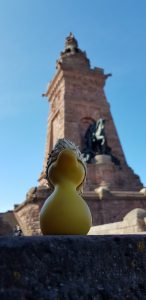
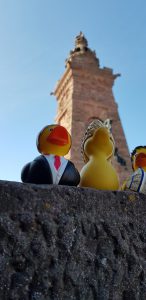
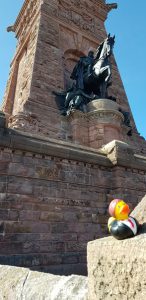

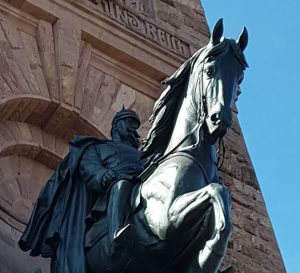
update June 2025: And we visited the Hohenzollerbrücke in Cologne with statues of the emperors (blog still pending)
Wilhelm I
Friedrich Wilhelm I.
Wilhelm II.
and only King Friedrich Wilhem IV. who initiated the accomplishment of the Cathedral in Cologne and who stayed in the same hotels as we did:
In Innsbruck (Goldener Adler)
and Ratisbon ( Goldenes Kreuz)
Wilhelm I., later emperor, 1848 prince, proposed to beat down the revolution of 1848 with „Kartäschen“ (Canister shots, atillery, splinter bombs) to kill his own revulutionary citizens. Which brought him the the nickname „Kartäschenprinz„. In Munich there too was a revolution 1848 at the end of the reign of Bavarian King Ludwig I., but mainly because of his affair with Lola Montez.
On the way from the parking lot to the Memorial there is also a crummy memorial of Reichskanzler Hindenburg. But as the one we saw is made from wood it can’t be the original. It was covered with nails, probably one of the statues to donate money for victims of WWI. (Kriegsnagelungen)
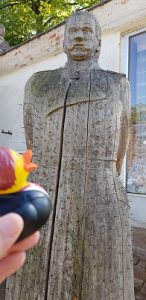
Credit: Maps Icons Collection, thttps://mapicons.tmapsmarker.com
![]()